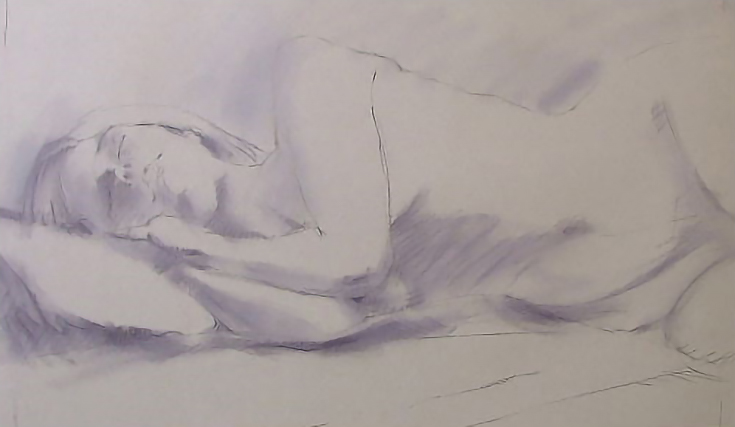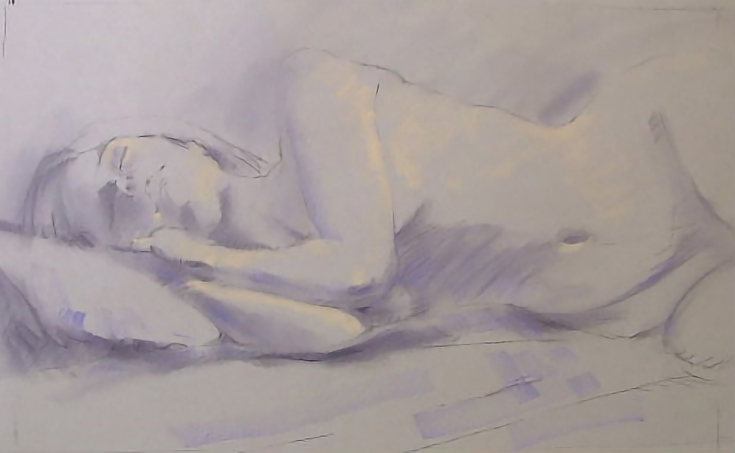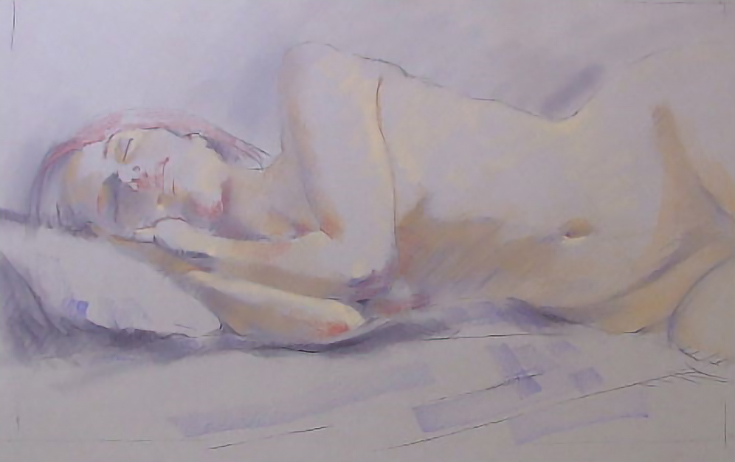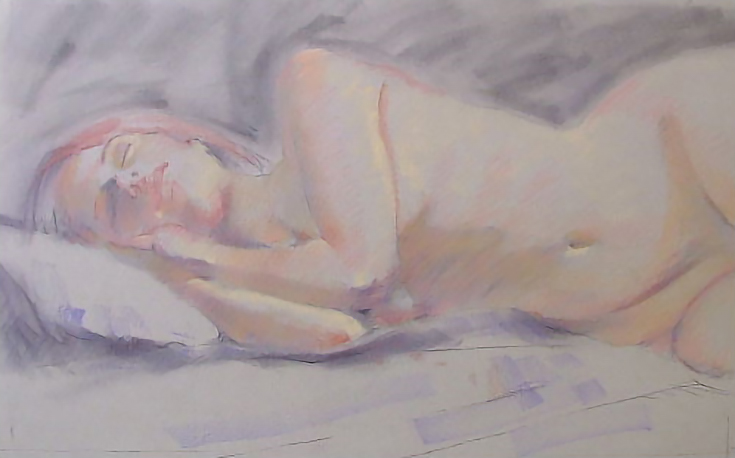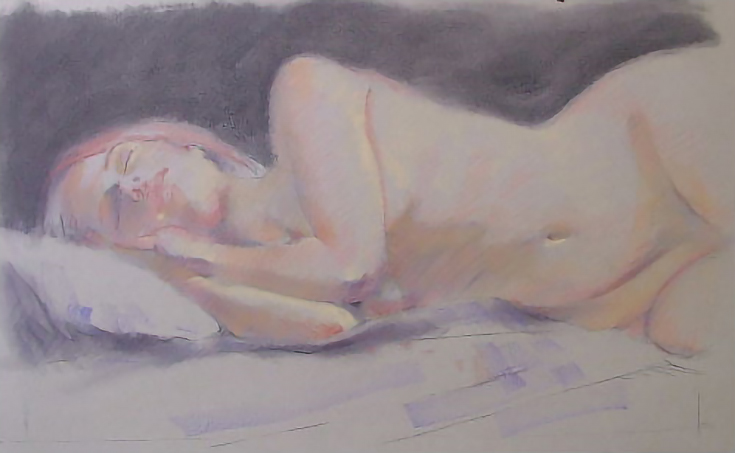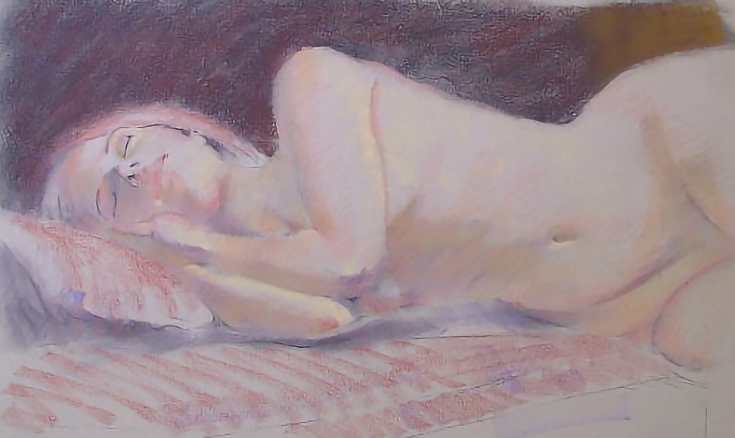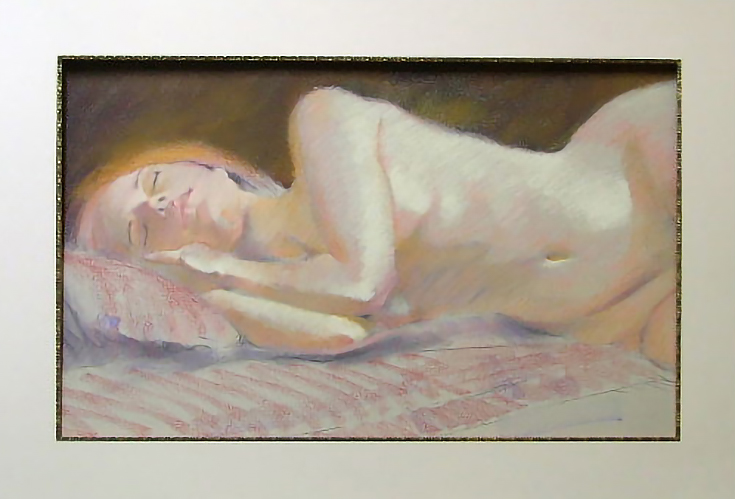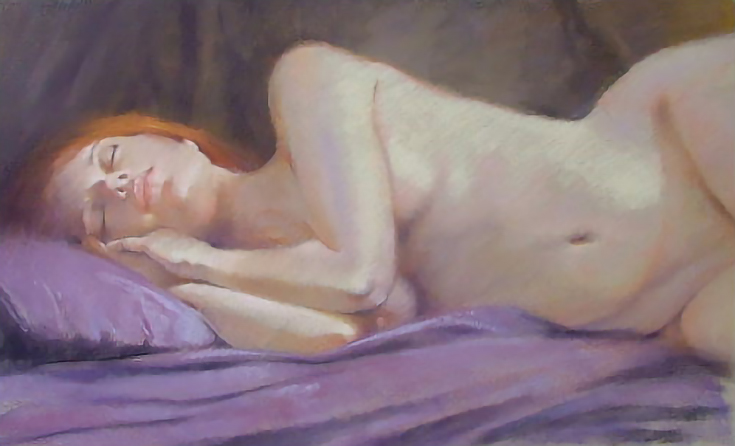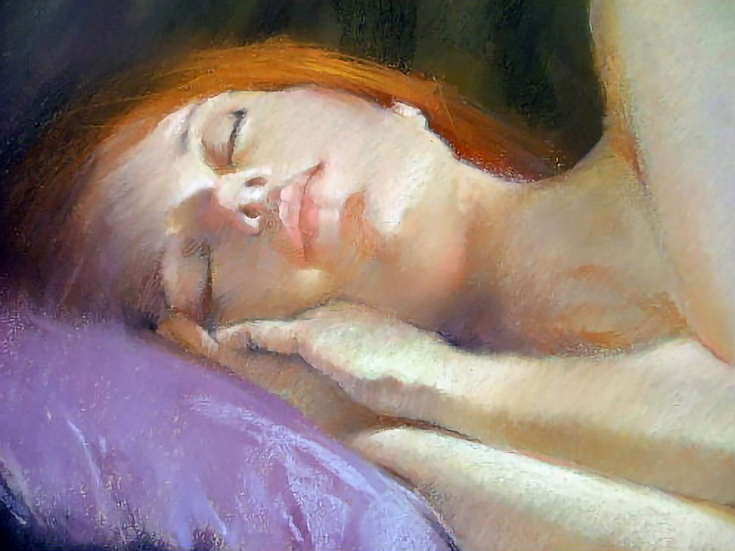In the following soft pastel demonstration I’ll be taking you through my process for painting the female figure. I hope you enjoy it!
My supplies:
I used a double sheet of Canson Mi Tientes pastel paper, in a warm grey colour. (I prefer to work on the smooth side, but I know many pastelists who choose the textured side. For me, the smooth side still has enough tooth.)
Here’s a look at all the pastels I used throughout the painting:

Included in the image above are some Schminkes, Windsor & Newton, Art Spectrum, Holbein, and some contes. I find the contes great for blending over the very soft pastels, rather than using my fingers or a stump.
The model:
The model for this painting is Sophie, a favourite of mine. I worked from a photo since I knew it would take me several days to complete this project to my satisfaction.
I ended up cropping my reference photo (shown above) to achieve a closer, more intimate feel in the painting.
The painting process:
I began my painting with a willow charcoal drawing. This allowed me to manipulate the lines with the heel of my hand, easily wiping them away whenever I wanted to adjust the drawing.
After every couple of strokes I would step back to view it as a whole. I tried not to get bogged down in the details of any one area.
When I was happy with how the drawing looked, I began to add some colour.
I started by adding shading, using a deep purple. I really wanted to just colour the paper at this stage and to mark where the accents would be—the bones beneath the skin, the darkest shadows, etc.
In the next photo I was beginning to get a feel for the lights, by studying how the light fell on Sophie’s body from my single light source. To create the most realistic illusion possible, every single plane of her body that faced the light needed to be marked.
Once the lights were in, the shadows needed warming up, so I put a couple of warm skin tones in over the purple, still working loosely.
Of course, nothing was set in concrete at that stage. . . I was still feeling my way around, tentatively building the shapes and adding warm colors.
See the marks of pure red and orange in this next image? I call them ‘hot spots’—it’s where you can see the warmest of the skin colours. This always happens in the creases of the skin, on the elbows, the lips, and the cheeks.
Sophie has red hair, so while I had the red in my hand, in that went too!
I made the decision to go really dark in the background, since Sophie was obviously sleeping and night scene seemed to make sense. It is all part of the story.
I also had a vision in my mind of a kind of glow behind Sophie, so I wanted to make the background richer. I tried to bring it to life with a bright orange over top of the dark purple, but the first few strokes are a bit of a shock.
I just left it at that for a while as I did some work on the foreground, tucking the background away into the recesses of my mind for the moment.
I put some of the foreground colour into the skin, and some of the skin colour into the sheets. . . this always helps to unify a painting.
Then, after that short break, I went back to the background.
I was still wondered whether I should use the orange or not, but eventually I did carry the orange through. Then I started including some of that colour elsewhere in the painting, instead of just the background.
I also checked to see how the painting would look with the mat around it.
The matting looked OK, so I went back to finishing off the skin tones using variations of pink and lightening the highlights.
The purple sheets went in at this stage, and I added more variety to the background by using the same purples and blues from the foreground.
Things began to come together nicely (Sophie had almost been put ‘to bed’ by this point) and I finally had a feeling this painting just might work out. I never really know until the end!
The last details went in, and I used my lightest colours to bring the skin to life.
Although it may not be apparent, I did have a few tense moments with this painting. . . but after all, that is why I paint!
I love the challenge, the nervous start, the frustration, and of course, the thrill at the end of having gained a little more experience and knowledge along the way.
If you’d like to see more figure paintings by Pauline, please visit her website at PaulineAdair.com or check out her blog at PaulineAdair.blogspot.com.
This post may contain affiliate links.


